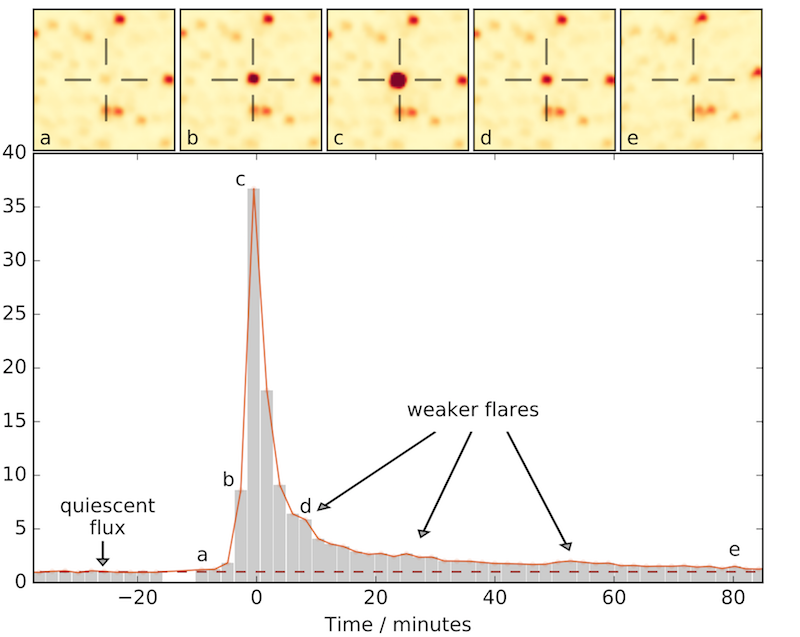 Cfredit: Everyscope
Cfredit: Everyscope1 posted on
04/10/2018 3:24:28 PM PDT by
BenLurkin
To: BenLurkin
So that’s why I haven’t heard from my Centauri pen pal in a couple of years.
2 posted on
04/10/2018 3:26:33 PM PDT by
DannyTN
To: BenLurkin
” 316,227,766,000 petajoules (316,227 petawatts)”
This makes no sense.
Anyone have any idea what it means?
316,227 petawatts for a million seconds?
3 posted on
04/10/2018 3:31:08 PM PDT by
DuncanWaring
(The Lord uses the good ones; the bad ones use the Lord.)
To: BenLurkin
These types of red dwarf flares normally last only a few minutes. The peak brilliance quoted (x68) probably lasted less than 30 seconds.
4 posted on
04/10/2018 3:33:34 PM PDT by
Spirochete
(GOP: Gutless Old Party)
To: BenLurkin
To: BenLurkin
This is why it’s useless to search for livable planets around red dwarfs.....too many flares that will fry anything in the Goldilocks zone.
To: BenLurkin
Old news. Happened four years ago! ;^)
To: BenLurkin
Proxima Centauri is just 4.2 light years away When the flare originally took place two years ago it was detected by the Evryscope
Maybe the politically correct editors at Popular Mechanics could learn how to edit - flare travelled at twice the speed of light? lol
30 posted on
04/12/2018 10:05:14 AM PDT by
eldoradude
(Keep calm...we'll get to the carrion part later.)
To: BenLurkin
Proxima Centauri, the closest star to the sun, recently burst forth with one of the most powerful flares ever seen for a star its size. That's gonna take a lot of Preparation H
32 posted on
04/12/2018 11:57:19 AM PDT by
COBOL2Java
(The bigger the government, the smaller the citizen)
FreeRepublic.com is powered by software copyright 2000-2008 John Robinson

